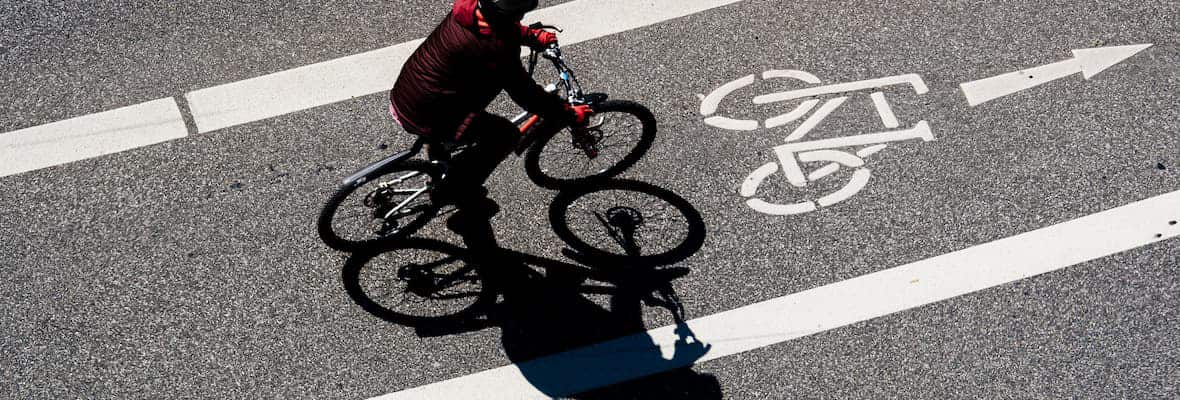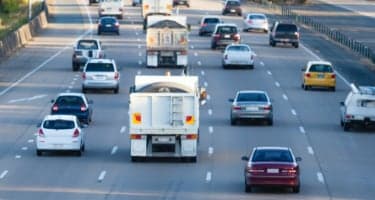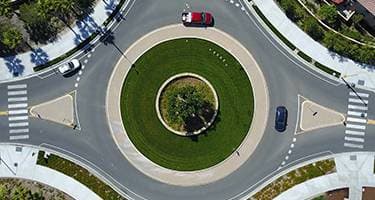Sharing the road alongside non-motorists, like cyclists, can be unpredictable and requires your undivided attention. Here’s what drivers should know about bicycle accidents, to stay safe and prevent collisions.
Coverage for Cyclist Accidents
There are three types of car insurance policies you can choose from when you take out cover with Budget Direct. All of these policies would cover any damage to a bicycle in the event of a car accident with a cyclist, where you were at fault.
However, if you were not at fault, then Budget Direct won’t cover the damage to the bicycle as you would not be liable for this damage.
Find a level of cover that suits you with award winning car insurance.
Do cyclists need insurance?
While cyclists aren’t legally required to take out insurance, some may hold specific bicycle insurance elsewhere.
However, if they have a Budget Direct Contents policy, it does provide liability cover for third party damage. This applies to anywhere in Australia a cyclist may be riding a bike or e-bike.
Safety Tips for Driving Around Cyclists
Just like motorists, cyclists have the same rights while on the road. Cyclists must obey all road rules including stopping at stop signs, traffic lights, riding on the left side of the road and giving way to pedestrians on crossings and intersections.
Across Australia, the law states that vehicles must leave at least a metre when passing cyclists, and remain 1.5 metres away wherever the speed limit exceeds 60km/h.
Sharing the Road
Drivers should be mindful of cyclists when sharing the road. Remember that they have the same rights as motorists and can choose to ride on the road when it permits.
Road rules across Australia aim to protect cyclists when they’re sharing the road with motorists. Did you know that cyclists can take up a full lane in a single file or ride side by side with another rider to maintain visibility?
And make sure to look up any variations to those rules in your state. In Queensland, for instance, cyclists must avoid being a traffic hazard and keep at least 2m between themselves and the back of a vehicle when they follow that vehicle for over 200m.
Car Doors
One of the biggest risks posed to cyclists is car doors being opened into their path.
Before you open your car door:
- Look behind and check for cyclists in blind spots.
- Use your mirrors and do a head check
- Face the passing traffic while getting in the car so that you can see cyclists (and other road-users) travelling towards you
This same advice should also apply to passengers before they open a car door to get in or out of a car.
Turning Left
Drivers must look for cyclists and give way when turning or entering an intersection. Cyclists must give way when approaching from behind vehicles that are turning and indicating they are going to turn left. In this case, a cyclist also shouldn’t overtake another vehicle on the left either.
It’s best to stay calm in these types of situations and choose not to speed ahead or cut the cyclist off. This way you’re also actively preventing a loss of control and a potential collision.
Hook Turns
Cyclists can turn right at an intersection by making a hook turn unless prohibited by a sign.
The way a cyclist should perform a hook turn will depend on whether or not the intersection has traffic lights. If the intersection has traffic lights then a cyclist can stop in the hook turn storage box and wait there before making a hook turn.
Some intersections will also have painted markings on the road to indicate where a hook turn can be made.
Roundabouts
In a multi-lane roundabout, motorists should be aware that cyclists can choose to travel in the left or right lane, regardless of lane direction and where they are exiting the roundabout.
Unlike motorists, cyclists are also allowed to turn right from both the right and left-hand lanes of a multi-lane roundabout. A cyclist turning right in a left-hand lane must give way to a vehicle wanting to leave the roundabout. While a vehicle entering the roundabout then the motorist must give way to the cyclist.
While in a single lane roundabout cyclists can claim a whole lane just like motorists.
Dangerous Roads
Dangerous roads may include:
- Roads with high speed and heavy traffic volumes
- Roads with no bike lanes or unsuitable bike lanes and shoulders
While legally they can still ride in these areas, it is recommended that cyclists don’t ride on dangerous roads unless there is signage stating otherwise.
It should also be noted that roads containing a ‘bikes must exit’ or ‘no bicycles’ sign are in fact prohibited and must not be ridden on under any circumstance.
Safety Tips for Driving Around All Non-Motorists
Here are a few ways to stay safe while driving around pedestrians, cyclists, and other non-motorists.
Keep a Safe Distance
All road users should maintain a safe distance behind the vehicle in front. This is to ensure that motorists can stop safely and avoid any potential collisions.
Check for Blind Spots
It’s important to watch carefully for all non-motorists, but especially smaller cyclists and motorcyclists because they may ride in blind spots.
Slow Down and Be Patient
Remain patient around all non-motorists, particularly when driving through areas that are close to schools, shopping centres and parks.
Buy Online and Save with Budget Direct
Find a level of cover that suits you, and if you buy a new policy online, get 15%^ off your first year’s premium.






